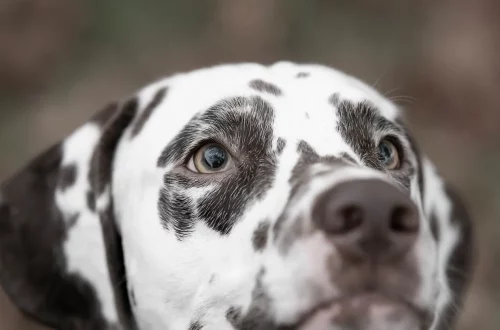
The Elegance and Charm of the Royal Poodle: A Comprehensive Guide
The Royal Poodle, with its regal demeanor and striking appearance, is a breed that has captivated dog lovers around the world. Known for their intelligence, elegance, and charm, these dogs have a rich history and are often associated with nobility and luxury. Originally bred in Germany as a water retriever, the Poodle has evolved into three sizes: Standard, Miniature, and Toy. However, it is the Standard Poodle that is often considered the epitome of the breed, showcasing both grace and athleticism.
Beyond their physical attributes, Royal Poodles are renowned for their exceptional temperament. They are highly trainable, eager to please, and possess a friendly disposition, making them excellent companions for families as well as individuals. Their hypoallergenic coat is another appealing feature, as it minimizes shedding and is often more suitable for allergy sufferers.
As we delve deeper into the world of the Royal Poodle, we will explore various aspects that contribute to their allure. From their history and personality traits to grooming needs and training techniques, this comprehensive guide will provide a thorough understanding of what makes the Royal Poodle a cherished breed among dog enthusiasts.
History and Origin of the Royal Poodle
The Royal Poodle, often simply referred to as the Standard Poodle, has a fascinating history that dates back centuries. This breed’s origins can be traced to Germany, where they were initially developed as water retrievers. The term “Poodle” is derived from the German word “Pudel,” which means “to splash in water.” Their remarkable swimming abilities were utilized in hunting, particularly for retrieving game from lakes and rivers.
As the breed gained popularity, it spread across Europe, eventually becoming a favored companion among the French nobility. The Poodle’s sophisticated appearance and intelligence made it a symbol of prestige. In France, these dogs were often used in circuses due to their agility and trainability, showcasing their impressive skills to entertain audiences.
Throughout the years, the Royal Poodle has undergone various transformations in terms of appearance and purpose. From a working dog to a beloved family pet, their adaptability has played a significant role in their enduring popularity. The breed was officially recognized by kennel clubs, solidifying its place in the canine world.
Moreover, the Poodle’s historical significance goes beyond its utility. Artists and writers have often depicted this breed in various forms of art, further enhancing its reputation as a symbol of elegance and charm. Today, the Royal Poodle continues to thrive as a beloved companion, reflecting the rich heritage that has shaped its identity.
Personality Traits and Temperament
The Royal Poodle is not only known for its stunning appearance but also for its delightful personality. One of the most notable traits of this breed is its intelligence. Ranked among the top breeds for trainability, Poodles are quick learners and respond well to positive reinforcement. This makes them ideal candidates for obedience training, agility, and various dog sports. Their eagerness to please their owners further enhances their trainability, making the training process enjoyable for both the dog and the owner.
In addition to their intelligence, Royal Poodles possess a friendly and sociable demeanor. They thrive on human interaction and are known to be affectionate with their families. This breed is particularly good with children, often forming strong bonds with them. Their playful nature ensures that they can keep up with the energy levels of active households.
However, it’s important to note that Poodles can also exhibit a strong personality. They are known to be somewhat independent thinkers, which can lead to a bit of stubbornness during training. Consistency and patience are key when working with this breed. Socialization is also crucial; exposing them to various environments, people, and other animals from a young age will help them develop into well-rounded adults.
Despite their noble appearance, Royal Poodles are surprisingly adaptable. They can thrive in a variety of living situations, whether in a spacious home or a cozy apartment, as long as they receive regular exercise and mental stimulation. This versatility, combined with their charming personality, makes them a popular choice for many dog lovers.
Grooming Needs and Maintenance
One of the standout features of the Royal Poodle is its luxurious coat, which requires regular grooming to maintain its beauty and health. Poodles have a curly coat that is both hypoallergenic and low-shedding, making them a suitable choice for allergy sufferers. However, their unique coat structure also means that they require a commitment to grooming.
Regular brushing is essential to prevent matting and tangles. Ideally, Poodles should be brushed several times a week, if not daily. Investing in a good quality slicker brush and a comb will aid in keeping their coat in top condition. Additionally, professional grooming is recommended every six to eight weeks to trim the coat and maintain its shape. Many owners opt for various styles, such as the “puppy cut” or the “lion cut,” depending on their preferences.
Bathing is another important aspect of grooming. Poodles should be bathed every four to six weeks, using a gentle dog shampoo to keep their coat clean and healthy. It’s crucial to dry them thoroughly after bathing, as moisture can lead to skin issues.
In addition to coat care, regular maintenance of the ears, teeth, and nails should not be overlooked. Poodles are prone to ear infections due to their floppy ears, so routine cleaning is necessary. Dental hygiene is also vital; regular brushing and dental chews can help prevent dental issues. Nail trimming should be done as needed to ensure the dog’s comfort and to prevent overgrowth.
While grooming may seem like a daunting task, many Poodle owners find it to be a rewarding bonding experience. The time spent grooming can enhance the relationship between the dog and its owner, making it a worthwhile endeavor.
Training Techniques and Socialization
Training a Royal Poodle can be an enjoyable and fulfilling experience due to their high intelligence and eagerness to learn. Establishing a solid foundation of obedience training is crucial, as it sets the stage for a well-behaved companion. Positive reinforcement techniques work best with this breed; rewarding them with treats, praise, and playtime will motivate them to learn and follow commands.
Starting training at an early age is advantageous. Puppy training classes can provide essential socialization and expose young Poodles to various environments, people, and other dogs. This exposure is vital for developing their confidence and reducing the likelihood of behavioral issues later in life.
Basic commands such as sit, stay, come, and heel should be introduced early on. Consistency is key; practicing these commands regularly will help reinforce the lessons learned. As they become more proficient, you can move on to more advanced training, including agility training, tricks, and even therapy work.
Socialization should remain a continuous process throughout their lives. Regular outings, playdates with other dogs, and visits to dog parks can help maintain their social skills. Poodles are generally friendly and adaptable, but early positive experiences with various stimuli will ensure they remain well-adjusted adults.
In conclusion, training and socialization are integral components of raising a Royal Poodle. With patience, consistency, and positive reinforcement, owners can cultivate a loyal, well-behaved, and happy companion.
**Note:** This article is for informational purposes only and does not constitute medical advice. For any health concerns regarding your pet, please consult a qualified veterinarian.




